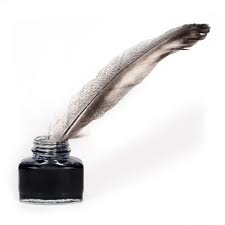 Ok. So you’ve got to draft 3 (or 4 or 5) and you’re happy with the plot, the characters, the relationships. There’s tension on every page. Your editor, if you have one—and you should!—has helped you get this manuscript into top shape.
Ok. So you’ve got to draft 3 (or 4 or 5) and you’re happy with the plot, the characters, the relationships. There’s tension on every page. Your editor, if you have one—and you should!—has helped you get this manuscript into top shape.
You have given a last careful read-through of the manuscript and you’re ready to publish it. Woo-hoo!
Except you’re not.
Why not? you ask. Because, despite your best efforts, it is still full of tiny little errors like:
- Typos. True typographic errors, for example: a sentence ending in a comma; a missing question mark at the end of a question; a space before a comma; a misplaced comma; missing hyphens in compound words; a thirty-word sentence without punctuation.
- Misuse of words like: effect and affect; their, there and they’re; team and teem. (I had all of these errors, and more, in edition 1 of Oboe.)
- Poor style: Awkward sentences; too many adverbs; overuse of the word ‘that’.
No matter how great your novel, the above categories of errors will greatly diminish it in the eyes of your readers, especially reviewers and judges in contests.
When I had completed draft 5 of Oboe, I gave the manuscript to two good friends who are well-read and eagle-eyed. They found a bunch of the above errors. I dutifully corrected the manuscript, re-read it, published it and then started on Lockstep.
I sent Oboe to some reviewers and one got back to me complaining of typos and errors; he sent specific examples. I was mortified. Had I sent him the wrong manuscript? Well… no. I looked at his examples and he was right. The errors were in the first five chapters. How many more were lurking in the other fifty-eight?
I knew I had to deal with the problem. My first thought was that I should hire a professional proof reader. But how to find one who is really good? And would a third party find style issues? And I’d already spent my budget on my wonderful editor Lisa Rector-Maass.
But I knew that I couldn’t do it myself. Everyone knows an author can’t find his or her own typos, right? Then I woke up one morning with the solution: do it backwards. Here’s what I did…
I opened the manuscript at the last sentence. I read the sentence, checked the punctuation, examined every word and read it again. Then I analyzed the previous sentence, then the previous one. When I got to the start of a multi-sentence paragraph, I read the paragraph to make sure it held together. I continued, sentence by sentence, paragraph by paragraph, until I got to the first sentence of Chapter 1.
It took me fifty hours and it was worth every second. I found over one hundred errors, some of which may never have been noticeable to a reader, but they were errors none-the-less.
Then I did the same for Junkie and found a ton more.
Are my books 100% error free? No. No book is. Not even the books of the major publishing houses. But I’m betting they’re 99.999%+ error free.
If you are passionate about the quality of your work, I highly recommend that you do the exercise of working backwards, sentence by sentence, paragraph by paragraph. It will take time but you will be shocked at how many errors you find and delighted as you fix them all.
—— o ——
Be informed about new reviews, posts and my coming novels, by signing up on the form to the right, at the top of the page and get a FREE copy of Junkie into the bargain.

 To check out the reviews or buy/try my novels Junkie and Oboe, you can see them on Amazon in Kindle or in paperback at my Amazon Author page. For Kindle in Canada: here.
To check out the reviews or buy/try my novels Junkie and Oboe, you can see them on Amazon in Kindle or in paperback at my Amazon Author page. For Kindle in Canada: here.
If you would like to email me at robert@robertpfrench.com I would love to hear from you.
Please feel free to share this post with others…
0 Comments